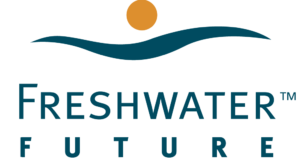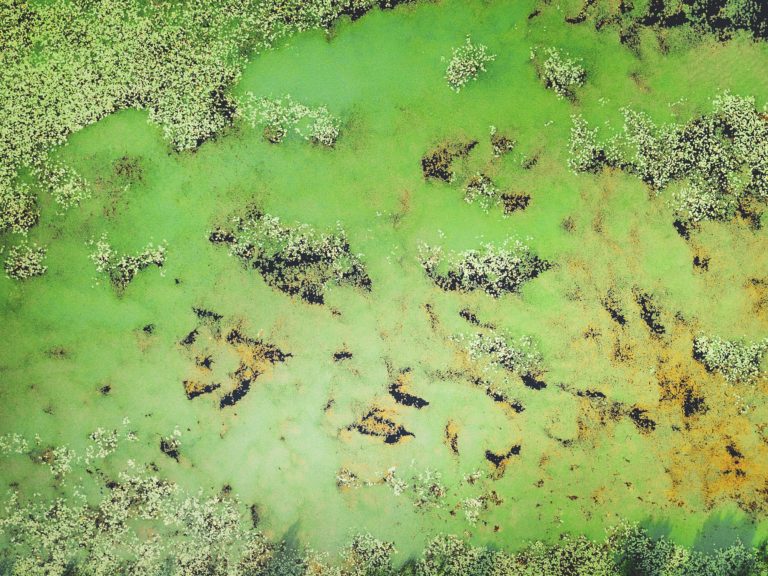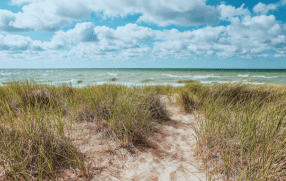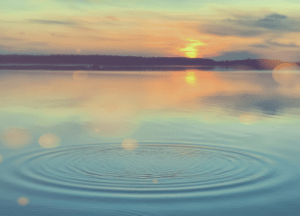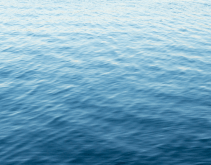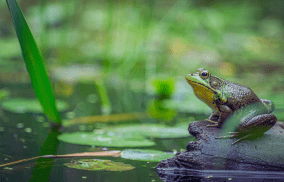by Alexis Smith, Freshwater Future Program Co-Director
In August of 2014, the Toledo water treatment plant sent out a mass alert warning service customers that their tap water was contaminated. Do not drink and do not touch advisories went out to over 300,000 residents, forcing families to live without running water, businesses to close, and healthcare facilities to limit operations for 3 days. Experts from the Ohio EPA and NOAA soon discovered that a toxin called cyanobacteria produced by the harmful algal blooms found in western Lake Erie was not only turning the lake green but also making it an unsafe source for drinking water. Since that event, state agencies, authorities, and many environmental advocacy groups have been trying to mitigate this ongoing issue.
The Ohio Sea Grant and Stone Laboratory in collaboration with NOAA and the Ohio State University hosted a one-day conference on September 6th, 2023, to highlight current scientific knowledge about harmful algal blooms, their causes, and best management practices (BMPs) to prevent them. Many of these BMPs are designed to reduce phosphorus runoff, which has been identified as a major source of nutrient pollution. One project reduced phosphorus runoff from old fields by 40% with the help of volunteer farmers and private agricultural retailers.
Other BMPs including cascading waterways and two-stage ditches were also presented as ways to control water flow and reduce runoff, potentially improving water quality. These collaborative projects and BMPs are a part of Ohio’s H2Ohio initiative – a collaborative approach between farmers, impacted communities and environmental agencies to address Ohio’s water issues. The H2Ohio initiative will soon be launching a new dashboard of their agriculture projects and plans as a way to showcase their progress. You can learn more about H2Ohio and the new dashboard by visiting their website.
All of the aforementioned efforts have yielded some reduction of nutrient pollution; however, many environmental advocates have expressed their concerns and criticisms of the state agencies’ work. The Ohio EPA’s Total Maximum Daily Load (TMDL) study, for instance, has received pushback for using a limited scope of parameters to assess water quality problems in Lake Erie. The study names “nonpoint sources” like commercial fertilizers and manure and “point sources,” like water treatment facilities and home sewage systems as some of the main pollutants; however, it fails to address the increasing number of large unregulated animal farms operating in many of the watersheds, particularly in the Western Lake Erie Basin. Improvements to the lake are minimal. The Central Lake Erie Basin in addition to increased HABs, has seen a concerning rise in hypoxia, another phenomenon caused by excessive nutrient input. Further, continuing voluntary and paid programs like H2Ohio simply haven’t gotten the job done. We now need to require any incentives to show results through actual monitoring and we need regulations with teeth to stop excessive application of phosphorus to the watershed whether through manure or chemical fertilizers being added to fields.
The Lake Erie Waterkeepers, a Freshwater Future grantee and dedicated water stewards, have recently released their sign-on letter urging EPA administrator Debra Shore to reject Ohio’s TMDL for Lake Erie because it does not go far enough. Freshwater Future has been a long-time advocate on this issue through our grants program, featuring educational resources on our website, and collaborating with our Canadian and US regional partners alike on annual advocacy campaigns like Lake Erie Alive — a movement that urges our state agencies and public officials to protect the lake. We encourage everyone to let their voices be heard and stay informed on this on-going fight against harmful algae blooms.
